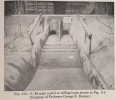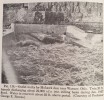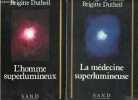-
Type
Art print (2)
Book (6497)
Magazine (21)
Manuscript (1)
Photographs (3)
-
Latest
Last 24h (2)
Last 3 days (1)
Last month (18)
Last week (9)
-
Language
English (10)
French (6510)
German (1)
Greek (1)
Latin (2)
-
Century
16th (3)
17th (11)
18th (256)
19th (930)
20th (3486)
21st (183)
-
Countries
Belgium (242)
Brazil (2)
Canada (3)
Côte d'Ivoire (11)
Denmark (1388)
France (4531)
Italy (38)
Switzerland (309)
-
Syndicate
ALAC (3)
CLAM (2)
ILAB (4304)
NVVA (149)
SLACES (149)
SLAM (2715)
SNCAO (15)
La théorie quantique et le schisme en physique - Post-scriptum à la logique de la découverte scientifuque, III.
Hermann. 1996. In-8. Broché. Bon état, Couv. convenable, Dos satisfaisant, Intérieur frais. XLIV+227 pages.. . . . Classification Dewey : 530-Physique
Edition établie et annotée par W.W.Bartley III - Traduction et présentation d'Emmanuel Malolo Dissaké. Classification Dewey : 530-Physique
L'ECOLE ET LES TECHNIQUES SONORES
Armand Colin. 1975. In-8. Broché. Bon état, Couv. convenable, Dos satisfaisant, Intérieur frais. 189 pages. Premier plat illustré d'une photo en couleur.. . . . Classification Dewey : 530-Physique
Pratique pédagogique. Le son parmi nous. Approche technique du son... Classification Dewey : 530-Physique
Portrait lithographié representant Alexandre-Edmond BECQUEREL, né à Paris en 1820 -
Lithographie format 37,5 x 25,5 cm marges comprises - Paris - Imprimerie Lemercier - vers 1880 -
Avec une notice biographique et un fac-similé d'autographe - ensemble extrait du Panthéon des Illustrations françaises au XIXéme siècle - Physicien -
Portrait - Photographie de la collection Félix Potin représentant Antoine BECQUEREL - Physicien - né à Chatillon sur Loing en 1788 et mort à Paris en 1878 -
Photographie 7,5x4 cm - collée sur carton - vers 1900 -
Portrait - Photographie de la collection Félix Potin représentant Thomas EDISON - Inventeur- né à Milan (Ohio) et mort à Westorange en 1931 -
Photographie 7,5x4 cm - collée sur carton - vers 1900 -
Instruction Résumée sur la Construction de Lignes aériennes
1 vol. in-12 oblong cartonnage éditeur, s.n., Paris, 1917, 16 ff. et tableau dépliant ("Représentation schématique des rotations à effectuer sur une ligne double")
Bon état
Élements de Physique experimentale et de Météorologie. Cinquieme Edition. 2 vols.
Paris, Béchet Jeune, 1847. Bound in 2 nice contemp. hcalf, richly gilt spines. (4),VII,876"(4),836 pp. and 40 large folded engraved plates with many fis.
This collection of Pouillet's lectures is his main work. they were widely read and was published in many editions. ""Although offereing no spectaculat novelties, theu presented , in clear language, a survey of the state of the various branches of physicss and of recent developments in them. Simulttaneosly, Pouillet held importent posts at the Conservatoire des Art et metier...""(DSB).
Mémoire sur la Pile de Volta et sur la loi générale de l'intensité que prennant les courants, soit qu'ils proviennent d'un seul élément, soit qu'ils proviennent d'une pile à grande ou à petite tension.
(Paris, Bachelier), 1837. 4to. No wrappers. In: ""Comptes Rendus Hebdomadaires des Séances de L'Academie des Sciences"", Tome IV, No. 8. Pp. 259-) 300. (Entire issue offered). Pouillet's paper: pp. 267-279.
Firstprinting of an interesting paper in the history of electricity in which Pouillet confirmed Ohm's Law. In fact, some authors have wrongly attributed the law itself to Pouillet. It is true, however, that he helped considerably to make known first in England and in France.
Elémens de physique expérimentale et de météorologie. Seconde édition, revue, corrigée et augmentée. Tome deuxième. Deuxième partie.
Paris, chez Béchet Jeune 1832, 200x125mm, demi-basane, titre et ornementations dorés au dos, plats papier marbré, reliure de l’époque.Bon état.
pages 374 à 876, planches 9 à 16 (configuration de l’Equateur), Pour un paiement via PayPal, veuillez nous en faire la demande et nous vous enverrons une facture PayPal
Elémens de physique expérimentale et de météorologie. Seconde édition, revue, corrigée et augmentée. Tome premier, première partie.
Paris, chez Béchet Jeune 1832, 200x125mm, 434pages, demi-basane, titre et ornementations dorés au dos, plats papier marbré, reliure de l’époque.Bon état.
11 planches gravées, Pour un paiement via PayPal, veuillez nous en faire la demande et nous vous enverrons une facture PayPal
Précis de Résistance des Matériaux appliquée aux machines.
EYROLLES. 3ème édition. 1945. In-4. Broché. Bon état, Couv. fraîche, Dos satisfaisant, Intérieur acceptable. 216 pages. Nombreuses figures en noir et blanc, dans le texte.. . . . Classification Dewey : 530-Physique
Classification Dewey : 530-Physique
Das Telegraphon.
(Berlin, J.A. Barth, 1900). No wrappers. In ""Annalen der Physik"", Vierte Folge. Band 3, No 12. Pp. 545-766. (Entire issue offered, No. 12). Poulsen's paper: pp. 754-760, textillustrations. Clean and fine, but punched in inner margins after cords, no loss of text.
First printing of this paper in which Poulsen describes his invention of the ""TELEGRAPHON"", THE FIRST magnetic sound recorder. The Telegraphone was shown, but not operated at the Paris Exposition in 1900 and obtained a Grand Prix.""The magnetic recording was demonstrated in principle as early as 1898 by Valdemar Poulsen in his telegraphone. Magnetic wire recording, and its successor, magnetic tape recording, involve the use of a magnetizable medium which moves past a recording head. An electrical signal, which is analogous to the sound that is to be recorded, is fed to the recording head, inducing a pattern of magnetization similar to the signal. A playback head (which may be the same as the recording head) can then pick up the changes in the magnetic field from the tape and convert them into an electrical signal.""(Wikepedia).The issue contains further Max Planck's paper ""Kritik zweier Sätze des Hrn. W. Wien"", pp. 764-766, and Ångstrøm ""Ueber die Bedeutung des Wasserdampfes und der Kohlensäure bei Absorption der Erdatmosphäre."", pp. 720-732.Shiers ""Early Television"" no 289.
Microwave mixers Collection Radiation laboratory series Vol. 16 Sommaire: Crystal rectifier units; Local-oscillator noise; Frequency control of local oscillators ...
McGraw - Hill book company. 1948. In-8. Relié. Très bon état, Couv. convenable, Dos satisfaisant, Intérieur frais. 381 pages augmentées de quelques figures en noir et blanc dans texte.. . . . Classification Dewey : 530-Physique
Etiquette sur coiffe en pied. Tampon bibliothèque.Collection Radiation laboratory series Vol. 16. texte écrit en anglais. Sommaire: Crystal rectifier units; Local-oscillator noise; Frequency control of local oscillators ... Classification Dewey : 530-Physique
Gravitational Red-Shift in Nuclear Resonance. - [THE POUND-REBKA EXPERIMENT - THE TEST THAT PROVED TIME IS RELATIVE]
(New York), American physical Society, 1959. Lex8vo. Volume 3, No. 9, November 1, 1959 of ""Physical Review Letters"", In the original printed blue wrappers. A very nice and clean copy externally as well as internally, near mint. Pp. 439-441. [Entire issue: 411-457].
First publication of the Pound-Rebka experiment which is regarded as being the last of the classical test of general relativity proposed by Albert Einstein to be verified. It is a test of the general relativity prediction that clocks should run at different rates at different places in a gravitational field and is considered to be the experiment that ushered in an era of precision test of general relativity. Today the so called gravitational redshift is essential for understanding the cosmos and operating the Global Positioning System (GPS).""Before he worked out the general theory of relativity, Einstein had already deduced that gravity must affect a light wave's frequency and wavelength. Light moving upwards from Earth's surface, for example, shifts to longer wavelength and lower frequency, as gravity saps it of some energy. But the effect is tiny in earth's modest gravity. In 1959 Robert Pound and Glen Rebka of Harvard University finally succeed in testing this crucial prediction, and they reported their results in [The present paper]."" (Physical Review Focus, 12 July 2005). Although the Global Positioning System (GPS) is not designed as a test of physics, it must account for the gravitational redshift in its timing system. When the first satellite was launched, some engineers neglected to predict that a noticeable gravitational time discrepancy would occur. So the first satellite was launched without the clock adjustment that was later built into satellites. It had a predicted time difference of 38 microseconds per day which, if not accounted for, could lead to hours of discrepancy.
MECHANICS OF LIQUIDS
An elementary text in hydraulics and fluid mechanics In 8° relié par éditeur nombreuses illustrations 271 pp
Selected Papers of Cecil Frank Powell.
Amsterdam & London, North-Holland Publishing Company, 1972. 4to. Publishers full cloth with dust jacket. Jacket with a closed tear. A fine copy. XIII,(1),456 pp.
Cecil Frank Powell was awarded the 1950 Nobel Prize in Physics ""for his development of the photographic method of studying nuclear processes and his discoveries regarding mesons made with this method"".
An Experiment in Search of a Directive Action of one Quartz Crystal on another. Received September 27, - Read November 17, 1898.
(London, Harrison and Sons, 1892). 4to. No wrappers as extracted from ""Philosophical Transactions"", 1891, Vol. 192 - Series A. Pp. 245-256, textillustr.
First printing of these experiments in oder to measutre the gravitational constant.""Closely related to his investigations on the constant of gravitation is the experiments in search of a directive action of one quartz crystal on another, which, though leading to a negative result is a model of the application of refined methods to physical researc of great delicacy.""(From the motivation for receivind the Royal Medal).
Théories modernes sur la matière.
P., Rousset, 1908, in 12 broché, 96 pages ; portrait hors-texte ; couverture défraichie.
PHOTOS sur DEMANDE. ...................... Photos sur demande ..........................


Phone number : 04 77 32 63 69
[Alexandre Gratier et Jules Rey, H. Dunod et E. Pinat] - PRASIL, Docteur ; (SERVIERE, G.)
Reference : 55277
(1908)
Mouvements des Liquides dans les Corps creux de Révolution.
Traduction de G. Servière, 1 vol. in-8 cartonnage pleine percaline grise, Publications de "La Houille Blanche", Alexandre Gratier et Jules Rey, Grenoble, H. Dunod et E. Pinat, Paris, 1908, 53 pp.
Bon état (nom de l'éditeur frotté en couv.)
L'optique
Seuil. 1962. In-12. Broché. Bon état, Couv. convenable, Dos satisfaisant, Intérieur frais. 191 pages avec des photos n&b.. . . . Classification Dewey : 530-Physique
Classification Dewey : 530-Physique
L'optique. Collection : Microcosme/Le rayon de la science, N° 16.
Paris, Editions du Seuil, 1962. 12 x 18, 191 pp., nombreuses illustrations en N/B, bon état.
"Lot de 2 livres : L'homme superlumineux + la médecine superlumineuse - Collection ""Recherches""."
Sand. 1992-1995. In-8. Broché. Bon état, Coins frottés, Dos satisfaisant, Intérieur frais. 207 pages + 189 pages - étiquette collée sur le 1er plat.. . . . Classification Dewey : 530-Physique
"Collection ""Recherches"". Classification Dewey : 530-Physique"
PRECIS DES SCIENCES PHYSIQUES ET NATURELLES, EPS, BREVET ELEMENTAIRE, ENSEIGNEMENT SECONDAIRE DES JEUNES FILLES
Hachette. 1904. In-12. Relié. Etat d'usage, Couv. légèrement passée, Dos frotté, Quelques rousseurs. 486 pages. Illustré de nombreuses gravures en noir et blanc. Dos taché. Dos, plats et quelques pages se détachant. Annotations en page de garde.. . . . Classification Dewey : 530-Physique
2e édition revue. Conforme aux programmes officiels. Avec une préface par G. Colomb. Illustré de 347 figures. Classification Dewey : 530-Physique
Untersuchungen uber Kathodenstrahlen. Habilitationsschrift zur erlangung der venia legendi der naturwissenschaftlich-mathematischen fakultät der Rupprecht-Karls-Universitat zu Heidelberg
Heidelberg, Rembold, 1897, un volume in 8, broché, (dos cassé), 37pp., 2 planches**4310/L7AR
LE LIVRE DES BIORYTHMES
EDITIONS KA. 1981. In-12. Broché. Etat d'usage, Couv. défraîchie, Dos frotté, Intérieur frais. 142 pages. Nombreux graphique en noir et blanc dans le texte.. . . . Classification Dewey : 530-Physique
Classification Dewey : 530-Physique
 Write to the booksellers
Write to the booksellers















